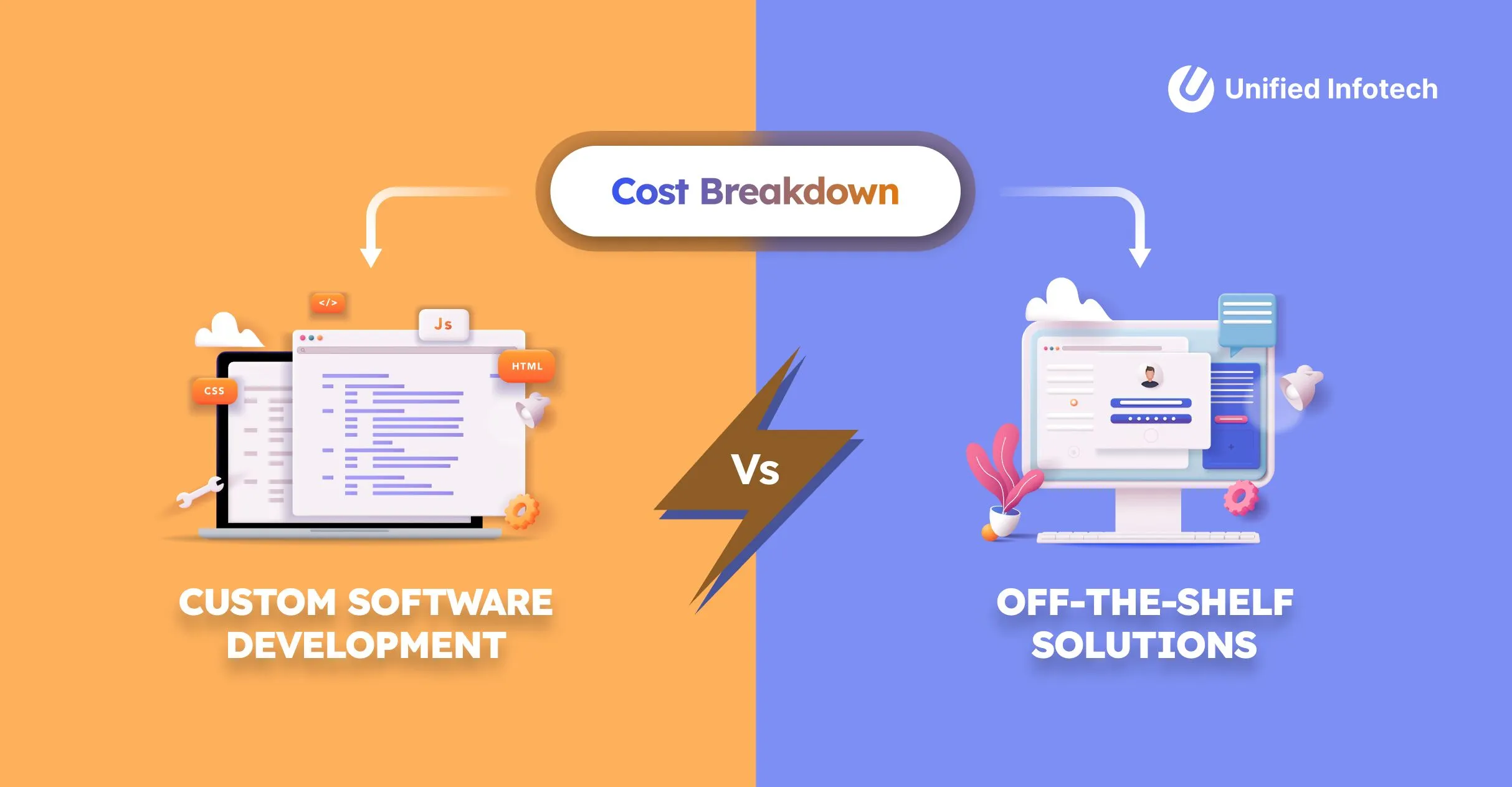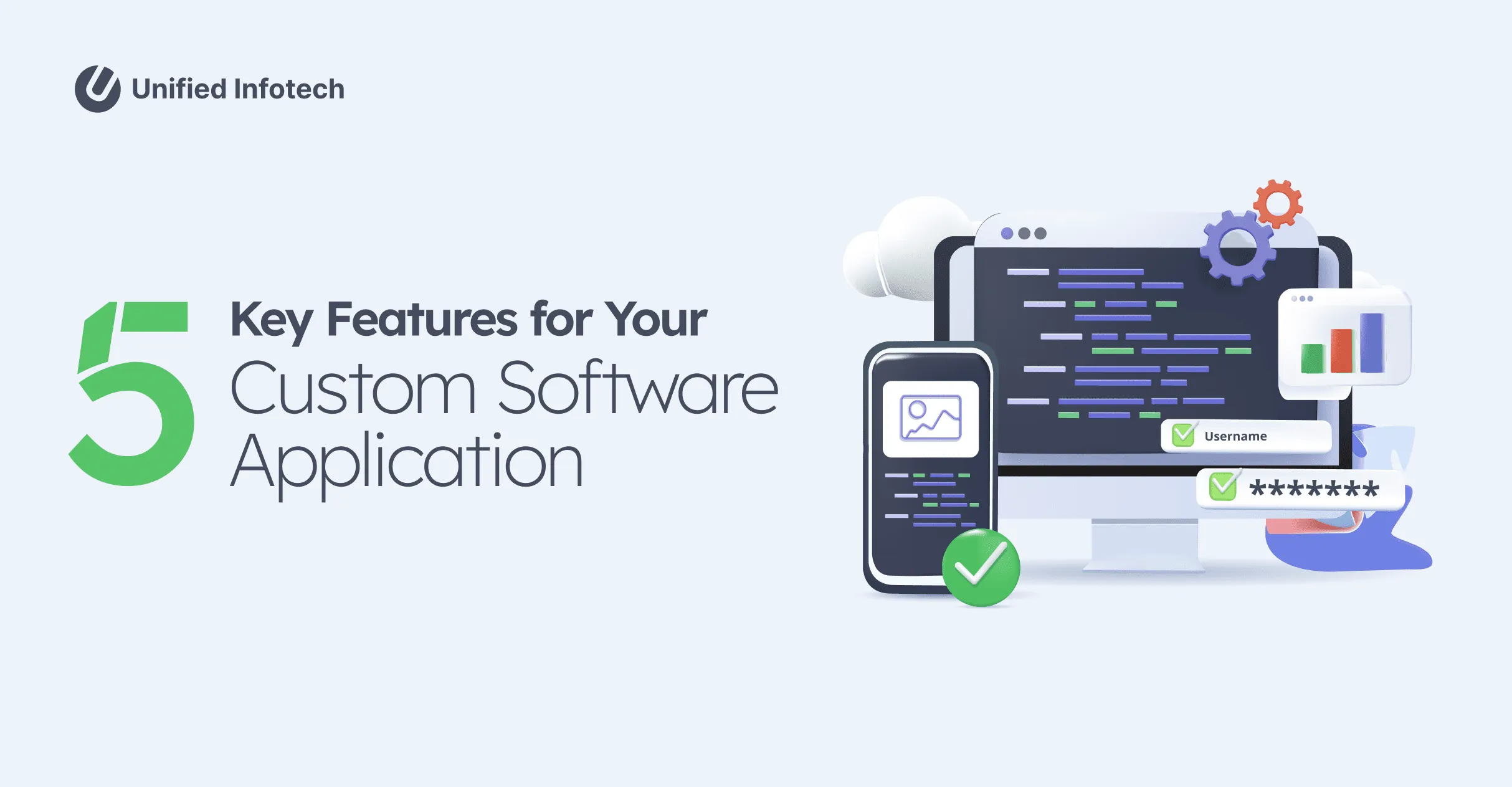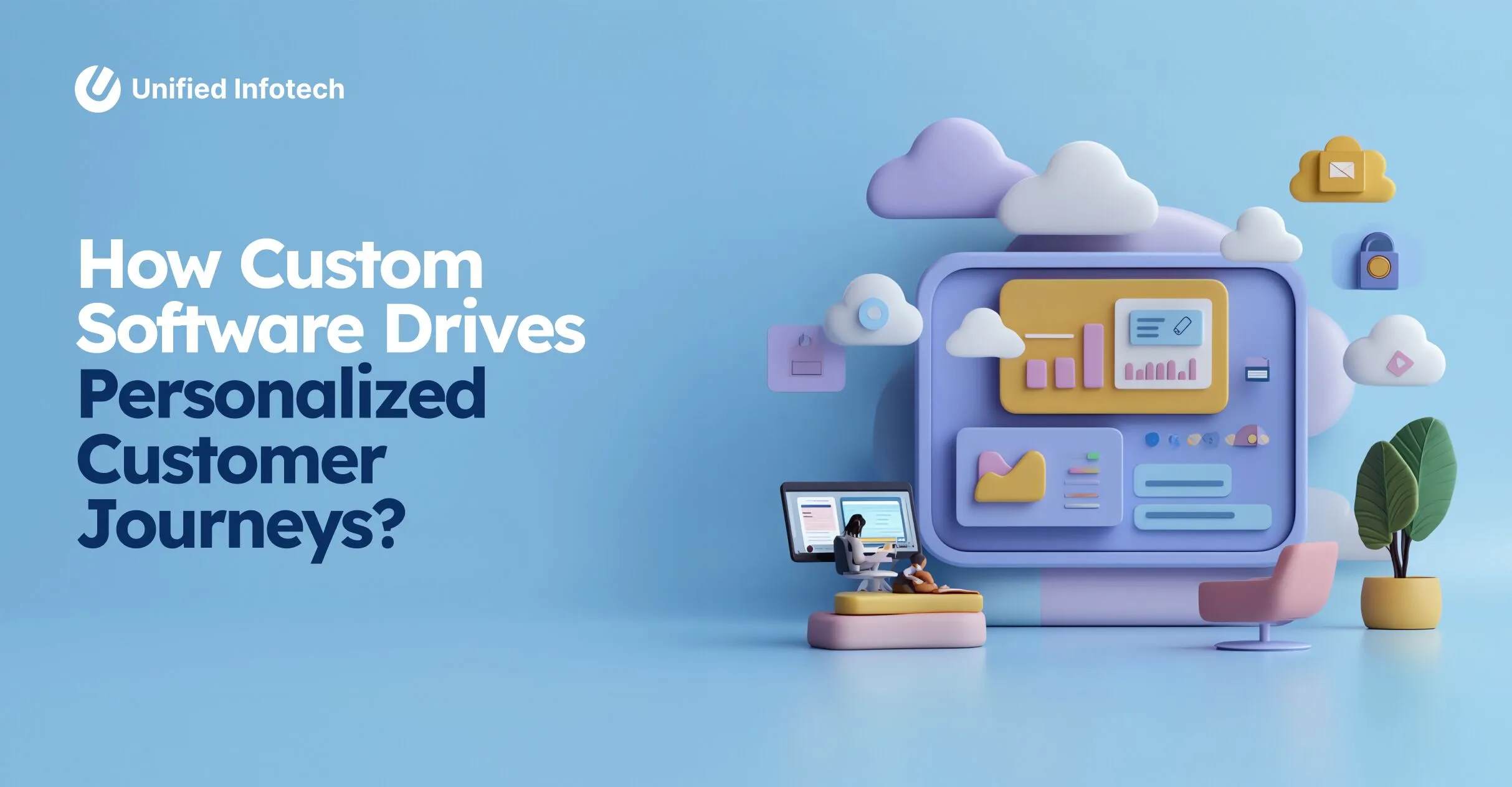
Site Search
How can Enterprises Upgrade their Technology Operating Model and Deliver High ROI
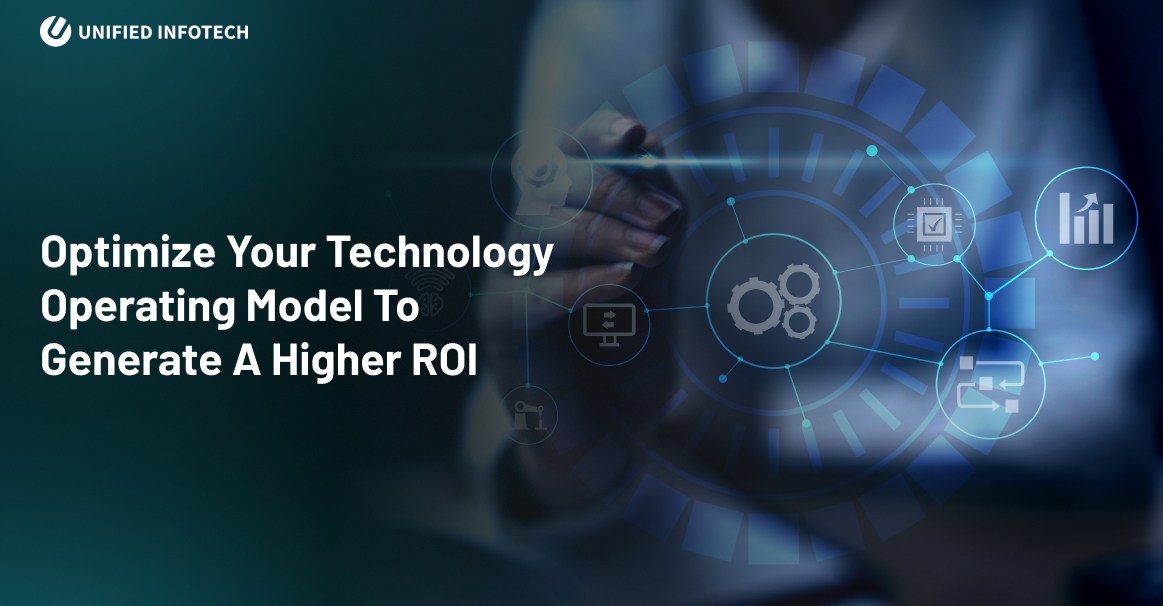
Table of contents

Let's talk
Reach out, we'd love to hear from you!
. Let us start by looking at some digital trends from Gartner.
- Nearly 90% of all businesses think integrating technology plays a critical role in achieving organizational goals.
- Over two-thirds of active businesses worldwide plan to increase their spending on technology and software in 2023.
- The global software market is predicted to cross $1 billion by 2025.
Clearly, spending on technology is on the rise. Yet an element of frustration and concern always underlines discussions associated with tech investments. Will digital investments deliver high returns in terms of value, cost-effectiveness, and agility? This question as a cause of concern is not unjustified. Tech investments have increased. But there have been few changes in the technology operating model adopted to envision, develop, manage, and maintain technology. Consequently, ROI maximization was curbed, and chances of outcome maximization seemed limited.
Today, technology is widely seen as a means of combating the ongoing global economic and societal instability. But what happens when you grapple with the uncertainties of an ever-changing digital landscape? Disruption is a way of life now. Organizations can only achieve digital success by analyzing and revising their enterprise architecture operating model.
Yet implementing these very operating models is seen as a major challenge in achieving digital transformation. A transformation is more likely to succeed when its operating model design is aligned with its business strategy. So ensure that you have a well-researched and well-formulated business strategy in place.
To understand this better, let us get an in-depth insight into what is operating model technology and how to leverage it.
What is Operating Model Technology–A Brief Definition
Gartner refers to it as an information technology operating model. This model defines how an organization should orchestrate its IT capabilities to align them with its strategic objectives. This ensures enterprise success by implementing high-velocity organizational changes, consistent workflow governance, and a comprehensive but relevant talent strategy.
With the correct technology operating model, you can increase the effectiveness of your decision-making process. You can also redesign and streamline your organizational workflows and ensure your team’s effectiveness through accountability.
Technology should always generate value. Implementing the right technology operating model will help your organization grow, thrive and sustain instead of just surviving.
How Do You Select The Right Enterprise Operating Model?
Even before we delve into the traits that define the success of a target operating model, one point needs mention and deliberation. A change in the mindset of organizations!
A survey by Gartner shows that 69% of organizations struggle to justify their funding for new technology investments.
You have to stop thinking about tech transformations as expensive cost-centers. Start thinking of them as potential value-generating investments.
It might seem like an anomaly as currently most companies are intently focusing on reducing their operational spending. But remember that with the right tech spending, you can alter your company’s narrative and redefine its future. And changing your mindset will give your agile operating model technology implementation, the much-needed thrust toward success.
A well-defined business strategy plays a critical role in the enterprise model design you want to adopt. You should have a definite idea about the business model you wish to employ. This also includes information about target consumer segments, pricing, channels, and delivery models. Both your business strategies and models directly influence your operational model, a tool instrumental in accelerating digital transformation successfully.
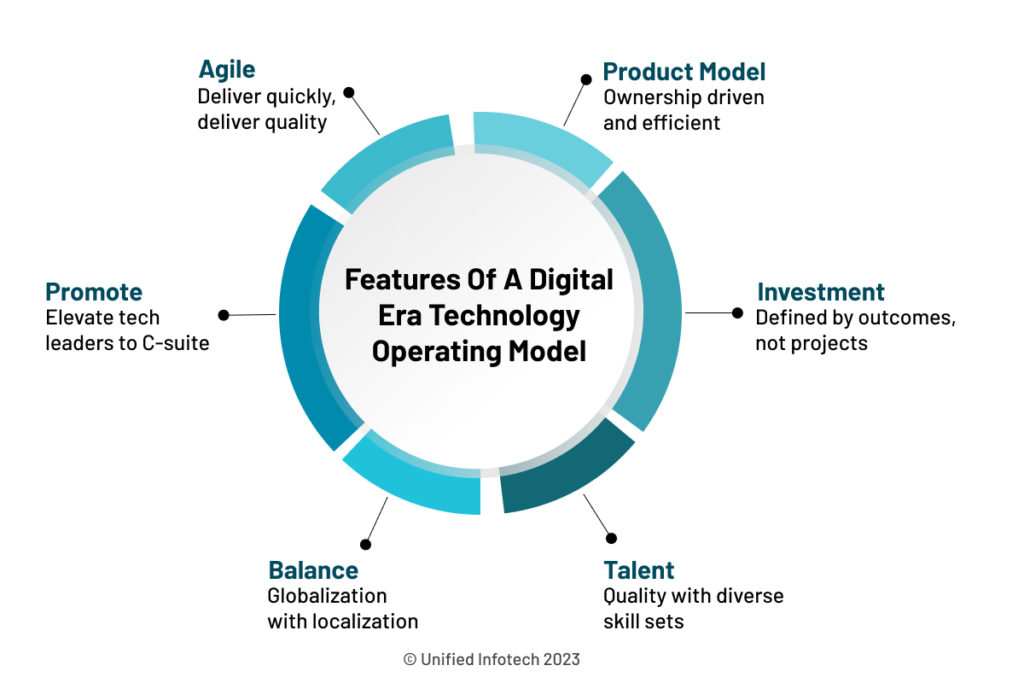
Now let us look at 6 essential traits inherent to successful digital era technology operating models.
1. Adopting the product model
Generally, all organizations face this dilemma. Should they concentrate on the process model or the product model? For an effective technology operating model, adopt the product model. There are several advantages to this. For example, it will help you change how you organize, manage, maintain your data. It will also redesign how you resource your data, tech investments, and other activities.
Further, by setting up persistent cross-functional teams, you can enhance focus on product development and its commercial outcomes. This model prioritizes user needs and encourages its integration into their target operating model to increase product adoption. Finally, this product-based technology operating model fosters greater job satisfaction. It empowers product development teams with direct ownership of the developed products and their outcomes.
2. Investing for outcomes
This is a continuation of the above point and involves a change in the area of funding. Any successful technology operating model example shows that the focus area of investments is more on the product area instead of individual projects.
Assign persistent budgets to your product teams. Hold them responsible for their outcomes like conversion of online traffic into sales, and increasing supply chain visibility. This will also reduce customer care call volumes. Now product owners can decide where they want to spend this money. Based on performance analysis, market acceptability and target realization they can decide which product to concentrate on. This accountability is a major contributor to enhancing the ROI of an implemented technology operating model.
3. Prioritizing tech talents
Employee expectations have changed in an evolving job market. Now they prefer to pick and choose where, how, and the type of work they want to do. The pandemic has spawned a culture of flexible timings and work from home. Hence today company timing flexibility is an essential criterion for job-seekers. This has resulted in a gap between the demand and availability of quality tech talent and is a cause of concern for top company executives.
A product-based approach requires forming small, stable, and permanent teams with diverse skill sets. Thus, adopting a product-based enterprise operating model can eliminate some of this concern by reducing the overall headcount. This is an important trait of a successful technology operating model because it helps optimize your labor spending, thereby evolving your talent strategy.
4. Balancing global scalability with local traction
Organizations have been traditionally plagued with conflicting needs where this is concerned. While some advocate product and strategy localization, others want to centralize systems, processes, and platforms to gain economic scalability and pool product innovations.
Now you can gain both. With Cloud computing, an organization can easily scale up its businesses globally while APIs and a modular architecture support the flexibility of localization.
Effectively this collaborative technologies operational modeling can help you to centralize your product development yet customize it to make it locally relevant.
5. Making technology your business thought partner
A distinct elevation in the status of technology is a sure trait of a successful technology operating model. Promoting tech leaders to the C-suite is an excellent example of this. While 10 years ago this was an almost alien concept, today, many noteworthy companies like Heineken and Walmart have created roles for top tech executives in the highest management levels. This elevation has made it easy for companies to manage, maintain and implement new technology more effectively.
6. Adopting agility as a way of working
You must deliver quickly and deliver quality. This might seem like a challenging proposition, but by implementing good software engineering practices like agility, DevOps, and automated testing, to name a few, you can easily achieve this.
Statistically, by adopting the best practices for software development, you can boost your developer efficiency, increase code stability and deliver quality products faster. As an organization, when you ideate how to create an operating model for technology, you must include agility because it results in a step-change improvement in performance. Agility is the key when the requirement is to maximize the ROI of your enterprise model by making it deliver high returns.
While it might not be possible to succeed with all the 6 traits mentioned above, you can adopt as many as possible and increase the effectiveness of your chosen technology operating model.
Building Gen-Next Digital Era Technology Operating Models To Face Future Uncertainties
Now that you know the generic requirements of a technology operating model design, let us look at some specifics. These will help you define a gen-next operating model for future needs and challenges.
This model is a unique combination of operational capabilities and digital technologies that is integrated in a sequenced manner. It will help you to achieve step-change improvements in cost-effectiveness, revenue generation, and customer experiences.
Let us simplify this model by breaking this operating model design into 2 critical parts.
Launching an integrated customer-centric operational-improvement program:
As an organization, you would have multiple performance improvement initiatives rolled out for the different verticals of your company. While these initiatives will help you improve performance within individual units, they might not show tangible improvement across your organization. The presence of performance lacunae or black holes within the adopted technology operating model is a direct consequence. Consequently, while you may achieve success for individual teams, other vital factors like operational costs or customer satisfaction might not improve.
So instead of working to implement improvement measures in silos, you have to think holistically. For example, since customer satisfaction is a priority, focus on their journey and your internal workflows that support or contribute to it. This will help you cut organizational silos and ensure holistic development.
To transition to the next-gen technology target operating model, start with classifying and mapping critical journeys across the organization. It is easy to fall into the trap of thinking you can realize your operating model transformation simply by improving existing processes and journeys. However, to see tangible results, you should focus on entirely reimagining the processes and workflows. Keep them aligned with your current needs and incorporate the scope of scalability for the future. By doing this, you might unlock hitherto unknown opportunities that might have the potential to add massive value to your business goals.
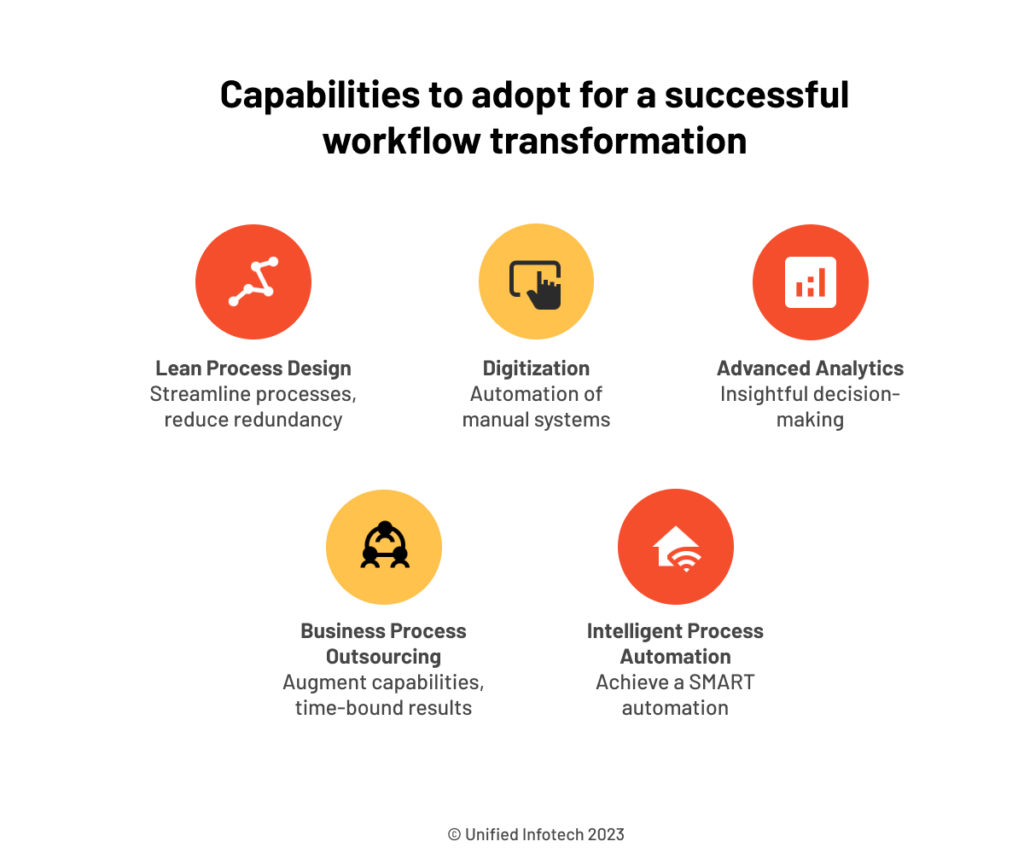
Changing your approach to achieve a compound effect:
Typically, it is seen organizations use 5 critical processes or capabilities to accomplish the workflow or journey transformations mentioned above. These include:
Digitization:
Automation of manual systems help redesign time-consuming manual and transactional tasks. They speed up workflows. This is of great advantage, especially where multiple systems are involved. Along with transforming journeys, digitization also creates self-service opportunities.
Advanced analytics:
By analyzing data using sophisticated tools, you can generate insights and use this intelligence to improve your business decision-making capabilities. Data analytics is also beneficial when you need to implement non-linear thinking.
Intelligent process automation(IPA):
This is an emergent trend and very useful to ensure the sustainability of your adopted technology operating model. It seeks to combine RPA or Robotic Process Automation, AI or Artificial Intelligence, ML or Machine Language, and Digital Process Automation or DPA and subsequently use them to redesign fundamental processes. IPA has the potential to replace manual labor in workflows that require repetitive and routine data aggregation from multiple touchpoints.
Business process outsourcing(BPO):
This refers to using resources outside your business or organization. Typically, outsourcing is used to complete workflows that require capabilities currently unavailable internally or those with time constraints attached. Here, you improve cost efficiency by using labor arbitrage.
Lean process redesign:
It is a versatile technology used to streamline processes, eliminate redundancy and foster a culture of continuous improvement by minimizing tasks and activities that don’t contribute to this or add value. It can be applied to improve long and short-cycle processes, transactional processes, judgment-based processes, internal and client-based processes.
However, how you implement these capabilities in your technology operating model will influence their output. To maximize the output of these capabilities, first implement them to their maximum capacity. Then execute them in the correct sequence and ensure that they do not work in a silo but aid and augment each other to achieve a multiplier effect.
To Conclude
Selecting the right technology operating model is crucial to catalyze workflow improvements and overcome organizational inertia. The senior leaders and management of your company should play a leading role in this.
Maintaining the efficiency of a technology operating model is an ever-evolving process. It is mainly driven by feedback from your internal and external stakeholders, business process efficiencies, and competitive digital landscapes. It would help if you kept augmenting your capabilities through hyper-focused incentives, best-in-class tools, and simple cross-functional processes that drive execution simplicity, speed, and clarity. However, if your assets, namely people, process, and technology, cease to deliver value, opt for an operational model transformation to regain your competitive edge.

